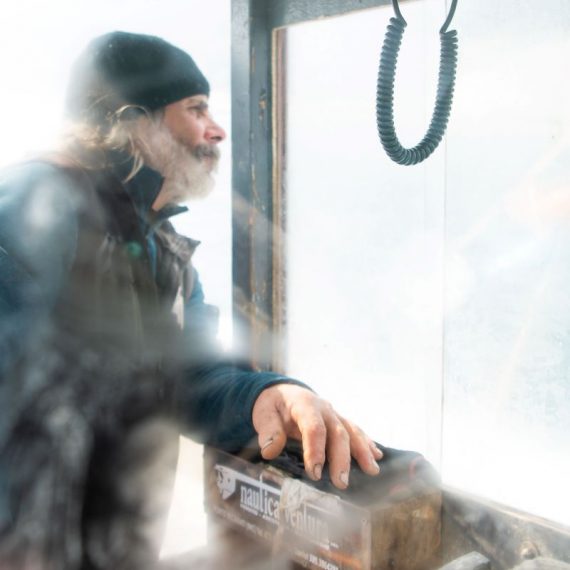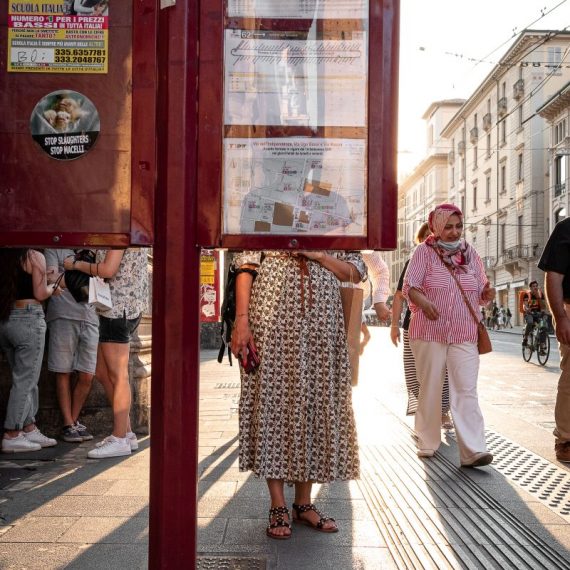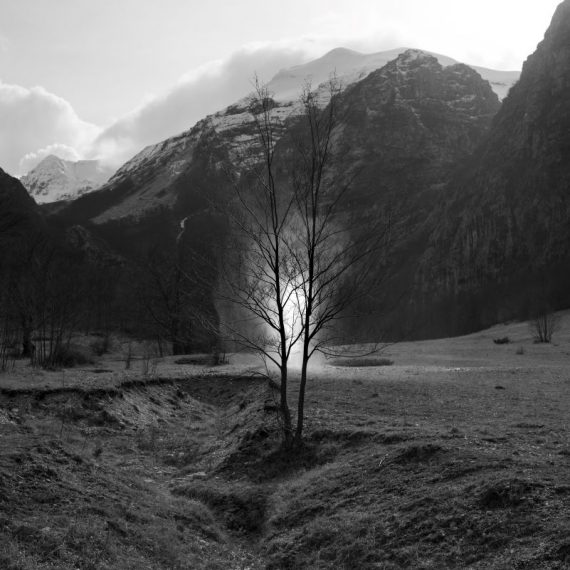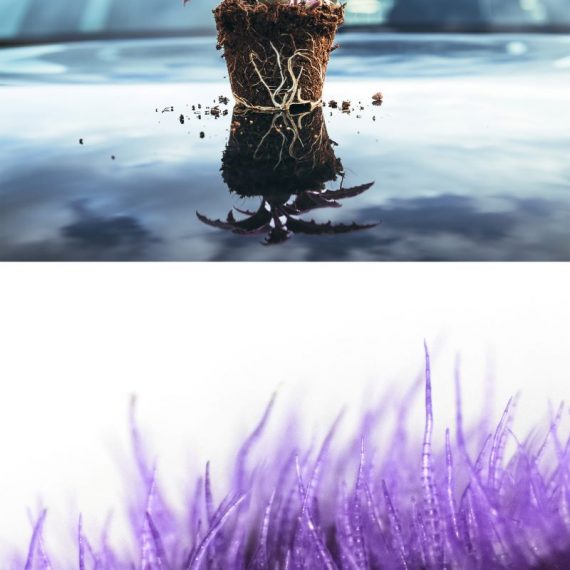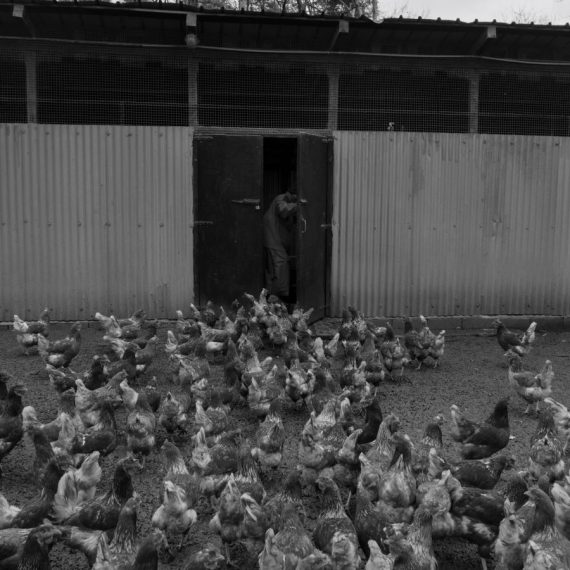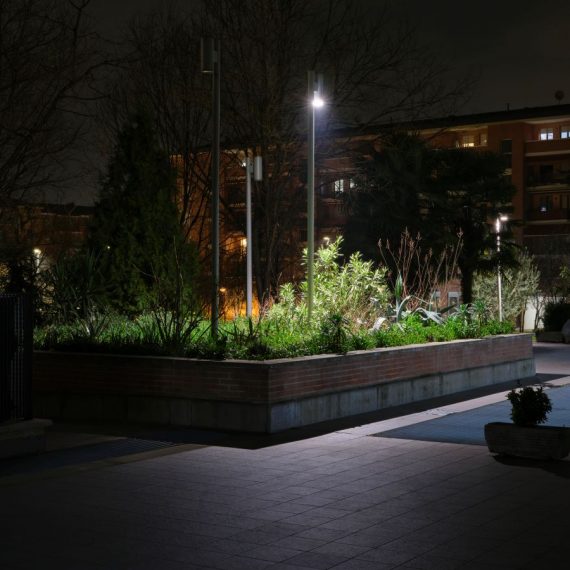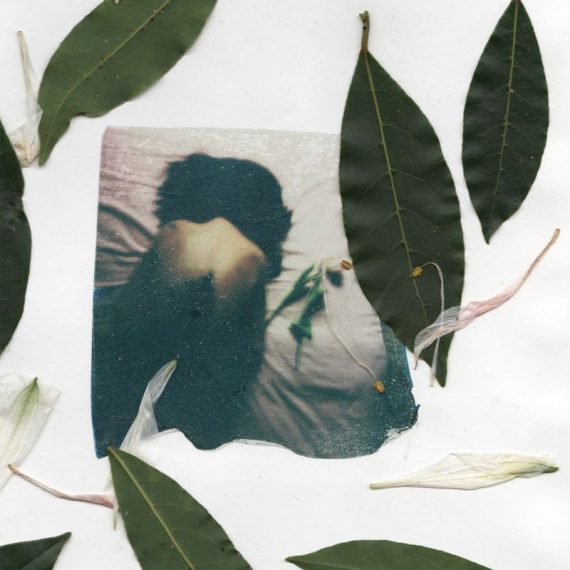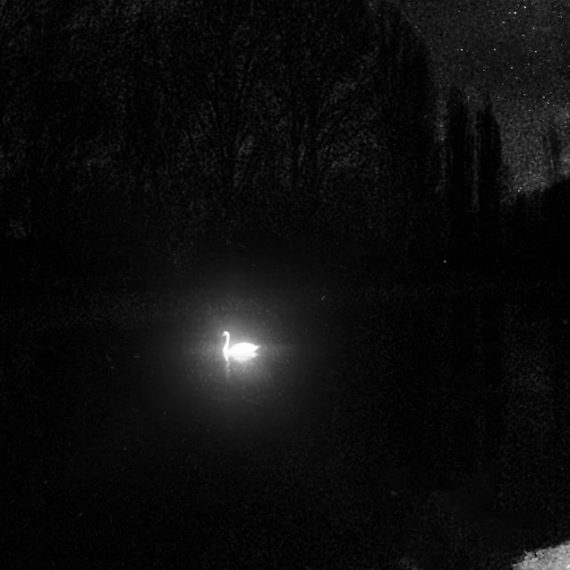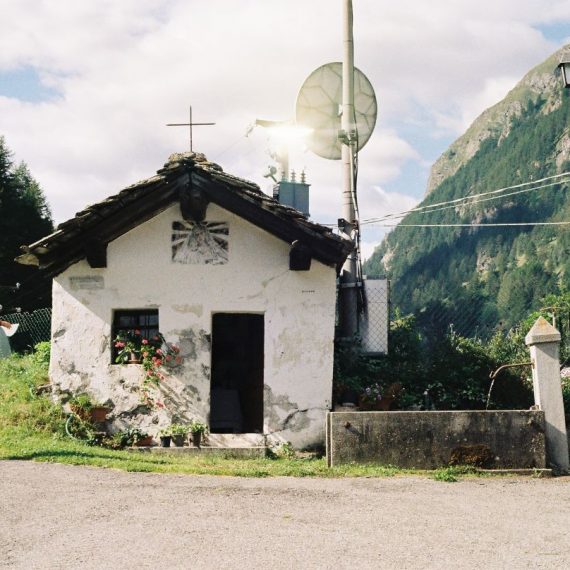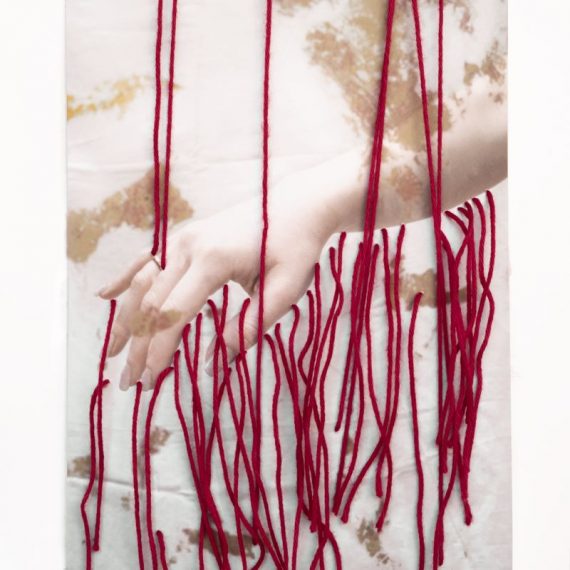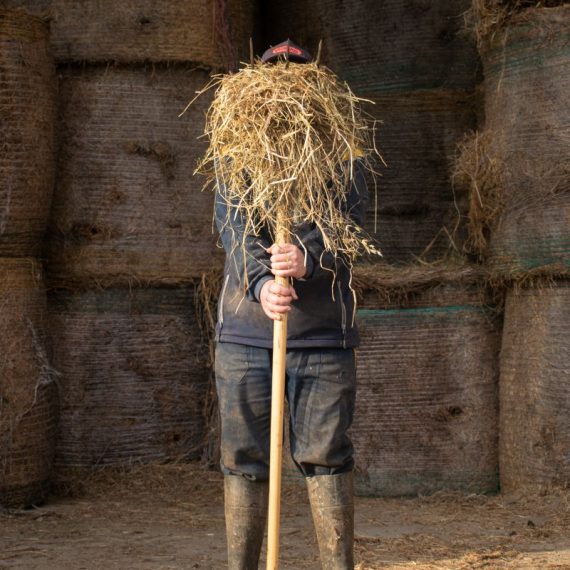Sofia Billi Rostirolla, Barabba
Marco and Raissa, a fisher couple who live hidden away on the Conero Riviera, own a boat called ‘Barabba’: a nickname given to Marco because of his long beard. The alarm clock goes off early in the morning, but this is a sacrifice they are more than willing to make. Dawn awaits them every morning, as they are greeted by their small boat moored to the Numana quay.
Spending so much time at sea has its upsides and downsides. It opens up a vision of another world, hidden from our view, now more than ever, as it is so often undervalued and belittled. Certainly this couple of workers show their love for the sea on a daily basis, trying to carry out their work as respectfully as possible.
Through this brief selection of photographs, a small reality hidden in the depths of nature is introduced, one laid bare to let us appreciate the sense of sacrifice coupled with the joy of human existence.
Lorenzo Falletta, Secreta elapsa
In the kaleidoscopic laboratory of human pathways, ‘nature loves to hide’ emerges not from the foliage or the inaccessible celestial vault, but amid the trails of concrete and sand, where everyday life unfolds in a dance of elusive figures.
The project presented here investigates the geometry of the veil that masks the supposedly unobserved intimacy of people in cities and along beaches: two places where human beings tiptoe, on the sidelines, supported and engulfed by a reality that wavers between familiarity and secrecy.
This photographic work thus becomes an exploration and celebration of the very human paradox: to be visible (!) yet within selective visibility.
The visitor is thus invited to look and analyse not only with sight but with empathy, perceiving the silence of a split second, aided by the tight shutter speed of the street, bearing in mind that each person, even in a sea of faces and bodies, is an island whispering their existence in the subtlest of expressions, be it voluntary or not.
Sofia Gastaldo, Sibyllae
The Sibillini are not just a mountain range, but a place of narratives and symbolism. Their aura is intertwined with the legends of the Sibyl, and gives the landscape a depth that goes beyond mere geography. Everyday life becomes a reflection of a legacy, transforming every gesture, every landscape into a chapter of a story that continues to be written to this day.
The work focuses on the strip of land stretching from the village of Amandola to Arquata del Tronto, characterised by their links to the tales told by Barberino, Antoine de la Sale and Joyce Lussu. The aim of the project is to investigate collective memory through a folkloric conception of the place, starting from the testimonies of those who, within their own experience, have faced reflections on themes such as magic, historical knowledge, community and ritual practices, in connection with their own territory.
Eleonora Mazzini, Identità nascoste
Every thing and every living being possesses a hidden identity: one that is invisible to the human eye but that lurks within all that has matter.
We are used to observing our surroundings in only one way: through our eyes. But what if we could go deeper? Then nature might reveal to us its most hidden identity, its most intimate and invisible part.
This series of images, through a sampling of natural elements, helps us to bring out precisely this aspect, and to show us the deeper beauty of what surrounds us daily and of which we too are a part.
Camilla Pedretti, La ventura delle venture
Nature’s time is a slow one, marked by well-defined rhythms in which expectation, birth and death alternate constantly, in a cyclicality that pervades everything, even human life.
It is precisely immersed in nature, hidden from outside gaze, that the community of the Piccole Apostole di Gesù (‘Little Apostles of Jesus’) carry out their mission. The days of the sisters, spent amid the fields and chicken coops, bring them into deep contact with the natural elements, which blend irrevocably even with their religious practice. In winter, their activities follow the rhythm dictated by the harsh temperatures, in which nature appears to hide, to die off only to return even more flourishing over the ensuing months. “Vanishing is thus the fate of all fates”: so writes Montale in his poem ‘Portami il girasole’, from his poetry collection Ossi di seppia.
Hiding thus becomes inevitable, almost necessary in order to foster change and create something greater.
In this reality, where the religious dimension is coupled with that of nature, vanishing brings us closer to the deepest aspects of ourselves, and so even the end may turn out to be a new beginning.
Filippo Poppi, Comfort says we’re fine
Strolling amid the houses at night, we are enveloped in a sleepy silence, in which the mind is free to expand, our thoughts to stir and our emotions to subside, and it’s as if we can breathe more deeply, with every part of ourselves.
This generates contrasting emotions: on the one hand intimacy and familiarity, warmth and security, and on the other a restless tension, an atmosphere of mystery, desolation and loneliness.
The light from the window is the only voice we receive, but it hides the interweaving of personal stories: each unlike the next, yet all experienced inside the same building.
A glance inside offers only a projection of a wider, constructed, lived-in place. Intimacy, security, mystery and the unknown; feeling at home in a divided space, in comfortable solitude.
Andrea Sciascia, Smarginatura
In the exploration of the human essence and its very deepest manifestations, we come across what Elena Ferrante calls ‘smarginatura’ (‘stepping outside the margins’). This condition outlines a journey through the complexity of reality, one that sometimes spills over onto us, challenging the barriers we have erected to protect ourselves. The incessant search for safety in everyday life leads us to build defensive walls, to seek safe havens in emotional relationships, in work, in routines. And the moment these defences collapse, we find ourselves wandering through unknown territory, deprived of the margins that hemmed in our existence. Our surroundings lose shape and coherence, fragmenting into a series of deformed visions of reality.
I decided to represent this ‘fragmentary’ feeling through Polaroids – a photographic medium that remains tactile – which resemble our being: like our body, they may be fragile and changeable, but what they contain inside them always remains imprinted in the mind: a memory, a sensation, an intimate essence that remains despite external transformations.
Through the smarginatura of these images, I try to explore the depths of people’s souls, their hidden facets and mysteries that lead me to reflect on the meaning of our existential journey and our multiple interpretations of the reality that surrounds us.
Davide Solieri, Ad un segreto così grande non si arriva per una sola via
There is an impalpable threshold that the night slowly defines: beyond this threshold lies deep reality, that which is concealed and subtracted from the light. That is where nature likes to hide: in a mysterious halo concentrated in the silence and darkness of an intimate dimension, far from everyday life.
Incorporeal forms of nature, alien to the senses, move around mistrustingly. Figures shy to the human gaze, to which this series of images tries to attribute a physiognomy by misleading them.
A camera programmed to shoot, silently and autonomously, is an attempt to unearth the essence of nature by eluding its transcendence. This experimental approach, connoted by the ritual of waiting, is coupled with the spiritual echo of acosmism: Deus sive natura (Baruch Spinoza).
These nocturnal visions accompany the debate between essence and form in a fragile dialogue that gently forces access to the secrets of Being.
Alessandro Tincani, Il valore nascosto del sacro
Religion, as a constitutive dimension of our history, provides the opportunity to reflect on how we relate to the issue of collective identity. Indeed, it is commonly regarded as a keystone of our origins, a cultural antecedent rooted in a misty past and lost in the meanders of bygone eras. This results in a sharp contrast between those who see it as a heritage to be safeguarded with a nostalgic attitude and those who would like to do away with it as a burden on the possible evolution of their world. The religious buildings we come across in our daily lives and which readily capture our attention, i.e. monuments observed with a largely tourist-like gaze, only serve to emphasise this conception, inducing a detachment in which the human and historical depth of the sacred is muted. On the contrary, hidden places of worship, small churches located in remote and hardly accessible areas reflect religion as a source of feeling and experience through which both individuals and communities express the need to produce existential meaning. In the simplicity of their structures and the incisiveness of the symbols, as well as their intimate bond with their surrounding territories, lies the strength of the whispers, desires, gratitude and fear that have shaped our civilisation. Narrating these only apparently distant environments allows us to go beyond attitudes of either protection and rejection of the sacred, and thus integrate it into the present of a dynamic understanding of cultural identity.
Sara Tonioni, Can you afford to be an individual?
Two extremes that have always been connected, yet which for a long time remain divided, finally come together: birth and death, childhood and old age.
The project Can you afford to be an individual? explores the helpless condition of human nature. Through a visual narrative, we observe how human beings are never entirely able to be themselves, if not at the extremes of their existence or in the world of dreams, where nothing is imposed.
Subservient to false truths, external forces bind us, support us and build us up. A progression of constraints that add up during the life of each human being, who is thus no longer an individual at the peak of his or her existence.
Beings with a concealed nature, perceived through a reflection of their own identity. Natural in their fragility, reassured by their impositions. Willing prisoners of our own illusions.
Emanuela Volponi, Can you see my true face
The life of every human being is conditioned by their interpersonal relationships. We move in a context of social situations that are completely different from one another, and in each of these we try to adapt to others’ perceptions of us by wearing a mask. Sometimes we choose it ourselves, while other times we wear one that others have chosen for us.
Yet is there a context where that mask may be cast aside? The project Can you see my true face sets out from this very question, trying to find an answer by analysing the relationship between humans and nature.
Awe, wonder, amazement and serenity but also helplessness are feelings that everyone feels towards nature and which, like a common thread, unite human experiences.
In this relationship, nature becomes the sole interlocutor with the human, who thus no longer needs to don a mask. A dialogue is established in which humans may rediscover their inner world and where they can finally show to nature that face which is ever hidden from others.


